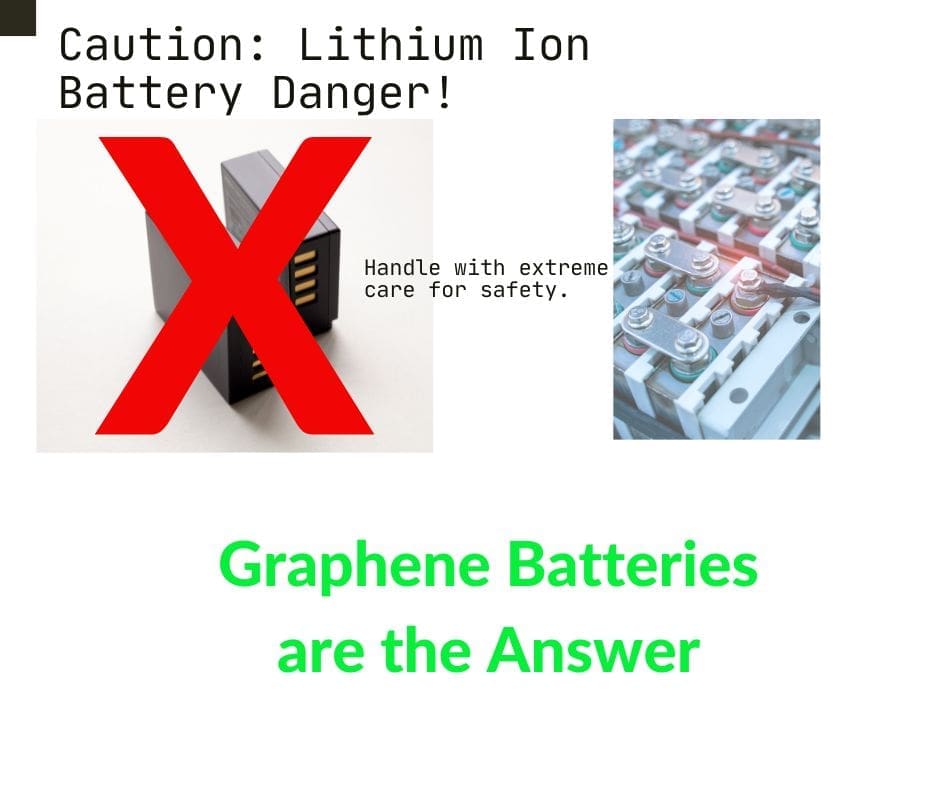
The Push to Replace Lithium Batteries: Embracing Graphene for a Sustainable Future
As we advance further into the era of technology, the need for safer and more sustainable energy storage solutions becomes increasingly critical. Lithium batteries, despite their widespread use, have significant drawbacks, including their caustic nature and volatility. This has led researchers and innovators to seek better alternatives. Among these, graphene stands out as a remarkable candidate, offering stability and safety without compromising performance.
The Drawbacks of Lithium Batteries
Lithium-ion batteries have become ubiquitous, powering everything from our smartphones to electric vehicles. However, their widespread use comes with several inherent risks:
1. Volatility: Lithium batteries are prone to overheating and, in some cases, catching fire or exploding. This risk is particularly high when batteries are damaged or improperly handled.
2. Caustic Nature: The chemical components of lithium batteries can be hazardous. If a battery leaks, it can release toxic substances that pose risks to both human health and the environment.
3. Complex Disposal: Disposing of lithium batteries is challenging due to their hazardous materials, leading to potential environmental contamination if not handled correctly.
The Virtues of Graphene
Graphene, a single layer of carbon atoms arranged in a two-dimensional lattice, offers a stable and nonvolatile alternative to lithium batteries. Here’s why graphene is poised to revolutionize energy storage:
1. Exceptional Stability: Graphene batteries are significantly more stable than their lithium counterparts. They are less prone to overheating and do not suffer from the same risks of thermal runaway, which can lead to fires and explosions.
2. Nonvolatile Properties: Unlike lithium batteries, graphene batteries do not contain volatile chemicals. This makes them safer to use, transport, and dispose of, reducing the risk of accidents and environmental harm.
3. Superior Performance: Graphene batteries boast higher energy density and faster charging times. This means they can store more energy and charge more quickly, all while maintaining a stable and safe operation.
4. Longer Lifespan: The durability of graphene batteries is another key advantage. They can withstand more charge-discharge cycles than lithium batteries, translating to a longer operational life and less frequent replacements.
Moving Towards Graphene
Adopting graphene technology requires investment and infrastructure development, but the benefits are clear:
1. Enhanced Safety: The nonvolatile nature of graphene batteries significantly reduces the risks associated with battery use, making them a safer choice for both consumers and industries.
2. Environmental Benefits: With fewer hazardous materials, graphene batteries are easier to recycle and pose less threat to the environment. This aligns with global efforts to reduce electronic waste and promote sustainability.
3. Economic Advantages: Over time, the durability and efficiency of graphene batteries can lead to cost savings. Fewer replacements and lower maintenance needs mean reduced long-term expenses.
The Future is Graphene
As we strive for a future where technology and sustainability go hand in hand, graphene stands out as a beacon of innovation. Its stability, nonvolatility, and superior performance make it an ideal alternative to the hazardous and caustic lithium batteries we rely on today. By embracing graphene, we are not only enhancing the safety and efficiency of our energy storage solutions but also taking a significant step towards a cleaner, more sustainable world.
—
#howlermag #howlermagazine #graphene #cleanenergy #sustainabletechnology #greeninnovation #safetechnology #futureofenergy #environmentalfriendly #techrevolution #batteryinnovation #sustainablefuture #ethicalenergy




